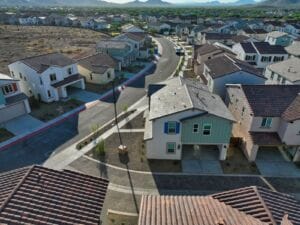The Greater Phoenix metropolitan area has captured national attention as the leader in job growth and population expansion. The area has led the country in population growth for three years. The 12-month period ending in May indicated employers added 66,500 net new jobs, which means the area’s 3.2 percent increase was the strongest in the country and nearly double the national average. These factors are fueling a diversification of the economy and a healthy Phoenix office market.
According to Colliers International, second-quarter Phoenix office market performance remained positive with net absorption of more than 96,000 square feet. This was the 29th consecutive quarter of positive net absorption in the office sector. Employers are adding workers at a very active pace, fueling tenant demand for office space and new development. Downtown, South Tempe/Ahwatukee and South Scottsdale attracted the largest leases during the second quarter. Most notable was WeWork’s lease for 90,576 square feet at Block 23 at CityScape in Downtown. This is the third sizable deal for the company in the Valley, following its 2018 leases for 54,000 square feet at Camelback Esplanade and 70,000 square feet at The Watermark in Tempe. Also noteworthy for last quarter was ASU’s lease for 50,000 square feet at SkySong Innovation Center 5.
The Greater Phoenix market delivered more than 1.4 million square feet of new space during the first six months of 2019. Tenant move-ins outpaced new construction, driving down the vacancy rate by 30 basis points (bps) to 13.3 percent. That 13.3 percent vacancy is 260 bps lower than a year ago. Tempe continues to post the lowest vacancy rate at 6.1 percent, followed by Southwest Phoenix, Superstition Corridor, Midtown/Central Phoenix and Deer Valley. Based on the current rate of absorption, Colliers expects vacancy to creep higher by the end of 2019 as spec development projects enter the market. However, a substantial increase in demand, or a few very large users entering the market, could rapidly lease that new inventory.
Vacancy declines are putting upward pressure on rental rates. Asking rents at the mid-year point were an average of $25.77 per square foot, up 4.5 percent from one year ago. Rent growth averaged more than five percent from 2014 to 2017 and then slowed to an average of 3.6 percent during the past four quarters. Rates are expected to rise throughout 2019, but at fairly moderate levels.
Construction completions have declined from 2016 to 2018, but the pipeline for new projects is robust with just less than 2.5 million square feet of space under construction. Tempe and Chandler submarkets lead the way with more than 1.1 million and 489,000 square feet of space underway. Developers have been focused on these two submarkets, adding more than 3.6 million square feet to Tempe and 2.6 million square feet to Chandler in the past five years. Increased tenant demand, diminishing inventory and increasing rents will push more new construction in the coming months.
National attention on the Greater Phoenix market has helped to increase investment sales volume. Investment sales volume was up 10 percent during the second quarter. During that three-month period, the market had 49 office property transactions totaling $424 million. The median price rose to $172 per square foot with cap rates resting at 7.5 percent.




